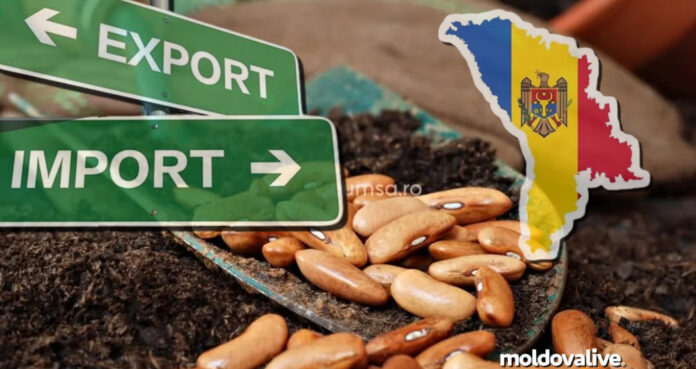An analysis of bean exports and imports to and from Moldova, based on statistical data from the past 4.5 years starting from early 2020, shows that Moldova exported 2,265.2 tons of beans, valued at 49,907,953 lei. The country sent these exports to 14 different countries. South Sudan is the top destination, receiving 41% of the total bean exports (921 tons). Belarus followed with 19%, and North Macedonia with 17%. Together, these three countries accounted for 77% of Moldova’s total bean exports, according to Iurie Rija, Executive Director of the Association of Exporters and Importers of Agricultural and Cereal Products ”Agrocereale.”
Moldovan companies exported beans annually to these countries, as well as to Germany, though in significantly smaller quantities (2.2%). Over the analyzed period, 21 companies from Moldova participated in bean exports.

“At the same time, during the same period, Moldova imported 5,154 tons of beans, with a total value of 93,026,342 lei. The average import price of beans was 34,778 lei per ton. Trends show an annual increase in imports, with 90% of the imported beans coming from Ukraine, Turkey, and Kyrgyzstan, with Ukraine accounting for 79% of the total imports,” says Rija.

Of the 83 foreign companies that imported beans into Moldova, five accounted for 72% of the total import volume. These companies include GOLD EXIM LTD and AGROLIDER EUROPE UKRAINE. Domestically, 45 Moldovan companies were involved in bean imports, with four companies responsible for 80% of the total. Among them, VITALCOMUS SRL made a significant contribution, accounting for 52% of the total imports.
FOR THE MOST IMPORTANT NEWS, FOLLOW US ON TWITTER!
Throughout the analyzed period, the volume of beans imported into Moldova surpassed exports by 2.27, representing a 127% increase, a trend observed annually. In 2023, imports exceeded exports by nearly threefold. In terms of total value in lei, imports exceeded exports by 1.86, or by 86%. The average import price was 23% higher than the average export price, indicating a need for further investigation to better understand this disparity.


